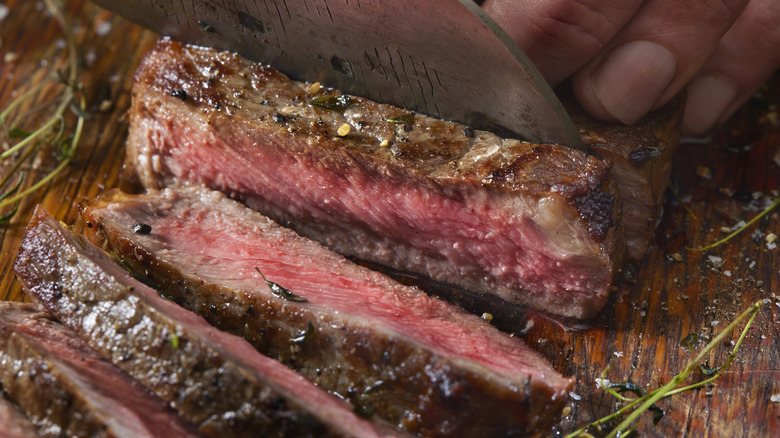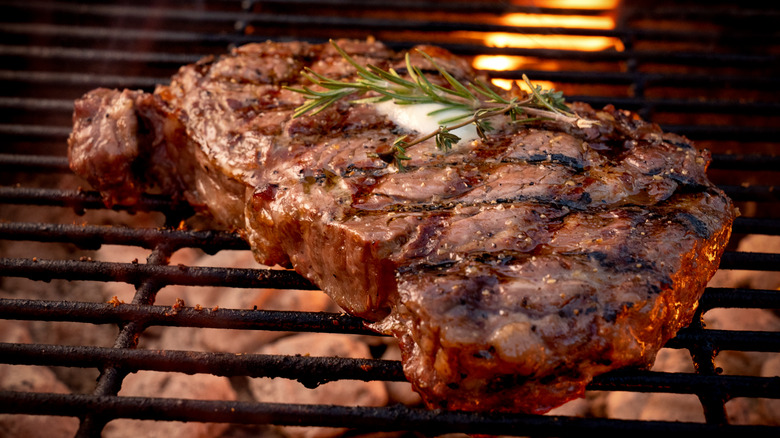The Choice Cuts Of Steak That Are Meant To Be Thick
Considering just how many different cuts of steak there are, it can be a little confusing keeping track of which are meant to be thin, and which are meant to be thick. However, it doesn't have to be a guessing game. For instance, skirt steaks and flank steaks, though tremendously flavorful, are nevertheless on the skinny side. Meanwhile, certain choice cuts of steak, especially those on the higher end of the price and popularity spectrum, are deliberately cut to be thick.
You'll no doubt recognize the names of the thicker-cut steaks, such as ribeye, filet mignon, New York strip, and T-bone. Beef shank steaks, though far less popular, are another example. All of these steaks are cut thickly less so for visual appeal than for how best to cook them. While the common measurement for premium steaks is 1 inch in thickness, 1.5 inches is generally considered to be the better thickness. It allows you to be more precise in your cooking by giving you just a little more wiggle room than you would have with a standard 1-inch steak. Essentially, you can cook it a little longer without ruining it.
Now, you can have all the thick steaks you want, but it is how they are cooked that makes all the difference in the world. The type of steak will determine the type of cooking that you do, but, generally speaking, thicker-cut steaks are at their best on the grill.
How to cook thick cut steak
Thicker steaks are really well suited to grilling because they can handle the higher heats better than thinner steaks, which will dry out when exposed to high heat for too long. The desired doneness for a thick steak is medium rare with a brilliant crust. You can achieve this either with a standard sear or a reverse sear. The reverse sear method works exceptionally well for thicker steaks because it cooks the steak gently, over indirect heat, at first, allowing it to come close to its internal finishing temperature, before putting it on high heat and getting that great seared crust, all without ruining the meat. This is especially good for any steak that is over the ideal 1.5-inch thickness.
You can adjust your cooking time accordingly depending on the thickness of your steak, but generally, for a 1 to 1.5-inch steak, you're looking at eight to 10 minutes for rare or medium rare, and between 12 to 15 minutes for medium. Keep in mind, that cooking over medium will likely lead to a tough steak.
In the case of a thick-cut steak like a beef shank, you're going to have a lot of gristle, cartilage, and sinews to deal with. Therefore, you need to change your approach. For shanks, you're best option are low and slow cooking methods, like braising, that cooks the meat long and gently enough to render those tougher sinews tender and edible.

